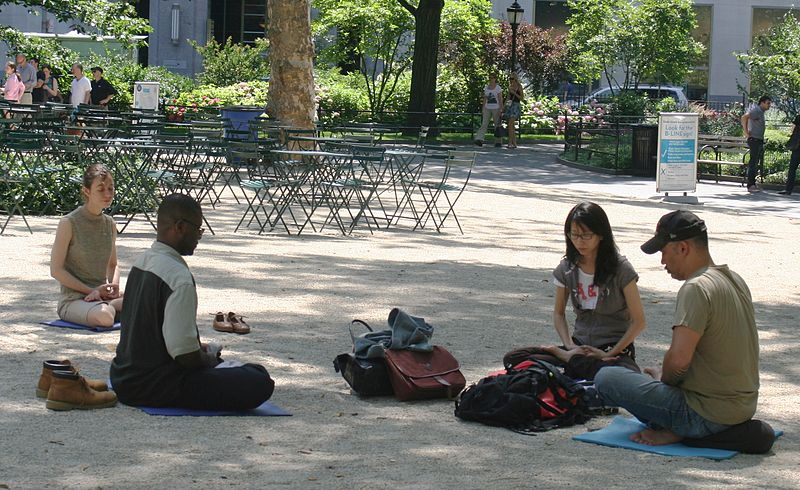BREATH MATTERS YOUR FIRST, LAST BREATH and all the ones in between Session 34 26th Aug 2015
“I’m gonna lay down my burdens down by the riverside
Down by the riverside down by the riverside……”
 Check out lots of intersting stuff at http://contrailscience.com/contrails-are-condensation-but-not-like-your-breath/
Check out lots of intersting stuff at http://contrailscience.com/contrails-are-condensation-but-not-like-your-breath/
-0-
Many people for whom ‘God’ is a problem are carrying unnecessary baggage. Perhaps they have got used to it as a barrier – we often are attached, if not addicted to, our pain. Alternatives to anthropomorphised God include ‘Ultimate Being’ or ‘Mystery” or ‘The Whole’ or Source – or ‘Breath of the Holy Spirit’ (chi?) that unites We are referring to the ‘All that isn’t you’ – unless you insist on being the Godhead and all its manifestations! Such egotism in us is usually because of the ‘negatives’ of fear, depression and anxiety.
A good old hymn that we used to sing at my secondary-modern school was “Breathe on me breath of God.” – https://www.youtube.com/watch?v=M5keJHZdWYM
1 Breathe on me, Breath of God,
fill me with life anew,
that I may love the way you love,
and do what you would do.
2 Breathe on me, Breath of God,
until my heart is pure,
until my will is one with yours,
to do and to endure.
3 Breathe on me, Breath of God,
so shall I never die,
but live with you the perfect life
for all eternity. by Edwin Hatch
Look again at such ‘simple’ teachings in the light of say Eckhart Tolle. All things do get made new. Part of the joyous benefits of developing an interspiritual world-view is discovery how profound were at least parts of the early spiritual experience that we had rejected. The process of thesis-antithesis-synthesis is something that many of us go through. The purpose of this session is to praise and appreciate this longish extract from Richard Rohr’s brilliant talk given in Australia.
Richard Rohr’s wonderful books are HERE
Richard Rohr; I don’t want to come to Townsville and not give you my best, although it’s not mine at all. But I want to give you a practice. I believe that if we are going to have a lay spirituality, it’s going to depend not on giving them new doctrines to believe or new dogmas to believe which ask almost nothing of you in terms of real transformation or enlightenment. We have to move from a belief base to a practice base. We don’t believe things because Fr said, or the Bishop said, or even the Pope said it. You believe things because you have walked a journey and you know it to be true for yourself. That’s what spiritual practice is. That’s what lay spirituality needs to be. And I’m going to give you a practice and without exaggeration, could, and for some of you, I have no doubt, will change your life. Because I get probably two letters or emails a week telling me that is exactly the case.
About six years ago, I went to a conference in Santa Fe, that’s the capital of New Mexico, and every year, the last weekend in April there is a national conference on the convergence of science and religion. Any of you who come from a scientific background you know this is surely one of the most exciting things happening. After the enlightenment, for some reason, we considered science the enemy of religion. And now in many cases we find your great scientists to be open to mystery, to non-dual thinking, to living with relativity to mystery, to both. Light being a particle and a wave, for example. They can live with hypothesis. It seems much easier than we clergy can. We can’t live with hypothesis, we have to have an answer for everything that settles the dust.
So I went to such a conference, where these brilliant gathering of PhDs. It was so expensive I wasn’t going to go, but a doctor paid my way and said, “Richard, you’ve got to hear these guys”. Well, there were four lectures a day, and usually after the second lecture I was so brain-dead from excitement and stretching of my awareness of the cosmos and universe we live in, that I just had to go back to my hotel room and journalise.
On the second day, the speaker was a Jewish Rabbi, and a scientist too. And he said amongst other things, “You know, you Christians, never really understood the meaning of the commandment to not take the name of God in vain, you seem to think that it means you shouldn’t say ‘God Damn you’. It isn’t very nice to say and I hope you don’t say it to anyone, but it doesn’t even come close to the meaning of the commandment. Vannas(?), or emptiness, to speak in vain, to speak with emptiness, is in fact to speak the name at all.”
When you use the name God, don’t use, don’t speak it, because you think you will know what you are talking about and you don’t. It’s always mystery. It’s always beyond, beyond, beyond, and any box you build will be too small of a box. (Rabbi or RR?)
Wow. Now I knew, and I’m sure you’ve been told, but we don’t know for how many centuries this was strictly followed. But we do know for a certain amount of time it was followed and that is, we never spoke with our lips the sacred name Yahweh and it was during that period that the word elohim and adoni because the sacred name was never to be spoken.
Then he went on and he said if any of you studied Hebrew, you know this is true, but when you write Hebrew, all you write are the consonants and what it means to be an educated Jew, is that your eye automatically fills in the appropriate vowels and there are four consonants in the sacred name Yahweh, and he said, “Did you know that those consonants if correctly pronounced do not allow you to close your lips or use your tongue”. In fact the reason the name could not be spoken is it could only be breathed, in fact the sacred name Yahweh was an attempt to imitate and replicate the sound of inhalation and exhalation. (Fr Richard slowly breathes in and out several times with a whispering sound.)
He did it about 30 times in this crowd of PhDs and I’m not exaggerating. But at the end of it I heard sobbing in the room, that people got it. God is as available as the breath, the air, the wind and the words are the same in many languages. Ironically, paradoxically, truthfully, was there some intuition here? The one thing you have done since you came out of your mother’s body is take in that breath and put it out, and you are doing it now. It’s the only constant, along with the beating of the heart. The beating of the heart starts even before.
Breathing is uniquely the phenomenon of this world and of course that moment comes, and we’ll all be there one day, and we’ll take in that breath for the last time. This could change your life, it can certainly change your prayer life. Because now you know that prayer is not something so much you do it’s something that’s done to you. You allow it. You say yes to it. You bring it to consciousness. You bring it to awareness. You awaken to the mystery and the miracle that is happening around you, within you and through you, all the time.
And then I finally understood why Paul says in two of his letters, “Pray always”. I tried and I couldn’t say Our Fathers or Hail Mary’s all day. It just didn’t work. Because we have defined prayer largely in a verbal way – in saying words to God. Then I realized, as I try to do this practice myself, and found it allowing me to live in the “naked now”, without my opinions, my judgements, my fears, my angers and my agenda.
To simply live in the moment and to be present to the moment in all that it offers. I realise and I hope you already have, that there isn’t a Catholic or protestant way of breathing. There’s not an Australian or an American way of breathing. There’s not a Chinese or an Iraqi way of breathing. There’s not a gay or a straight way of breathing. This just becomes too big a world, too big a truth, maybe we don’t even want it.
Maybe we don’t want a God who is that good a news, who is that giving, who is that accessible, who can really change us that much, on whose life we, moment by moment, second by second, depend. I give you this gift. Some of you will forget it as you walk out the door, but a handful of you will try it. Maybe, I hope, even more than a handful. It works for me, like last night waking up with jetlag all night, & I just go back to my breath, & I’m out of my racing mind into my body, where God it seems has chosen to dwell as a tabernacle. And there I can rest, there I can be grounded, there I can trust. There love comes much more easily. See, the mind space is always closing down, but the heart space just desires to be open. It desires to receive what is, as it is, moment by moment.
This I offer to you, surely, possibly, I think, the most solid & most universal foundation for a lay spirituality.
If the Christian church is to continue on its path of renewal, if it is to continue to discover its own depth and its own breadth and its own beauty and its own possibility for the world it’s going to come from such transformed people. Not people who just have right ideas, but people who live inside of the world in a new way, that is much bigger and much broader than just ideas. As Jesus puts it, “Loving with your whole heart, your whole soul, your whole mind, your whole body and with your whole strength”. When all of that can come together, and it doesn’t come together naturally, usually we are eliminating one part of our self, but whenever all of you is there, you’re praying. Where all of you is there, whatever you are doing is giving glory to God. That is the work of much spirituality.
Because what we tend to do is eliminate the body, we eliminate the mind, eliminate the heart. We can never allow them all to live together in one gracious symphony. That is the work of your whole life. It doesn’t happen by 15, it doesn’t happen by 25, and I guess I have to say it doesn’t happen by 66, except now and then. All it needs to happen is once in a while, just enough so you know it’s true, and hence forward God is not out there, which is innocuous religion when God is no longer out there, and not just in here but in all creation, in everything that lives. What you experience is what the same Thomas Merton said so well, “When you finally know, what you will know is that the gate of heaven is everywhere”.
It was both St Francis and St Ignatius who told both of their communities and became the motto of both of our communities, “To see God in all things”. My God and everything else. When you can see that broadly and that deeply, when you can see through that veil, secretly joyfully and clearly, you will have seen, and you will have seen indeed. -END-
RP: Yah……weh = the first, final & ultimate breath-mantra!
-0-
Wish me a good death as I wish you: ‘A Valediction: Forbidding Mourning’ – poem by John Donne
As virtuous men pass mildly away, And whisper to their souls, to go,
Whilst some of their sad friends do say,’The breath goes now,’ and some say, ‘No:’
Marion and I knew a wonderfully spiritual woman the report of whose passing was as Donne writes. Her name was Florence, a nurse in the 1st WW – and she was held as a baby in the arms of Abdu’l-Baha!
-0-














